1-Benzylpiperidin-4-ol
Modify Date: 2025-08-20 18:19:33
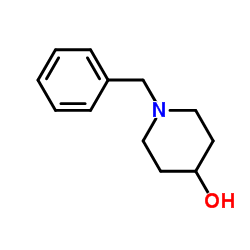
1-Benzylpiperidin-4-ol structure
|
Common Name | 1-Benzylpiperidin-4-ol | ||
|---|---|---|---|---|
| CAS Number | 4727-72-4 | Molecular Weight | 191.270 | |
| Density | 1.1±0.1 g/cm3 | Boiling Point | 294.4±0.0 °C at 760 mmHg | |
| Molecular Formula | C12H17NO | Melting Point | 61-63 °C(lit.) | |
| MSDS | Chinese USA | Flash Point | 123.5±16.5 °C | |
| Symbol |

GHS06 |
Signal Word | Danger | |
| Name | 1-Benzyl-4-hydroxypiperidine |
|---|---|
| Synonym | More Synonyms |
| Density | 1.1±0.1 g/cm3 |
|---|---|
| Boiling Point | 294.4±0.0 °C at 760 mmHg |
| Melting Point | 61-63 °C(lit.) |
| Molecular Formula | C12H17NO |
| Molecular Weight | 191.270 |
| Flash Point | 123.5±16.5 °C |
| Exact Mass | 191.131012 |
| PSA | 23.47000 |
| LogP | 0.91 |
| Vapour Pressure | 0.0±0.6 mmHg at 25°C |
| Index of Refraction | 1.578 |
Synonym:1-Benzyl-4-Piperidino Section 2 - COMPOSITION, INFORMATION ON INGREDIENTS
Risk Phrases: None Listed. Section 3 - HAZARDS IDENTIFICATION EMERGENCY OVERVIEW
Hygroscopic (absorbs moisture from the air).The toxicological properties of this material have not been fully investigated. Potential Health Effects Eye: May cause eye irritation. Skin: May cause skin irritation. Ingestion: May cause irritation of the digestive tract. The toxicological properties of this substance have not been fully investigated. Inhalation: May cause respiratory tract irritation. The toxicological properties of this substance have not been fully investigated. Chronic: No information found. Section 4 - FIRST AID MEASURES Eyes: Immediately flush eyes with plenty of water for at least 15 minutes, occasionally lifting the upper and lower eyelids. Get medical aid. Skin: Get medical aid. Flush skin with plenty of water for at least 15 minutes while removing contaminated clothing and shoes. Ingestion: Get medical aid. Do NOT induce vomiting. If conscious and alert, rinse mouth and drink 2-4 cupfuls of milk or water. Inhalation: Remove from exposure and move to fresh air immediately. Get medical aid. If breathing has ceased apply artificial respiration using oxygen and a suitable mechanical device such as a bag and a mask. Notes to Physician: Treat symptomatically and supportively. Section 5 - FIRE FIGHTING MEASURES General Information: As in any fire, wear a self-contained breathing apparatus in pressure-demand, MSHA/NIOSH (approved or equivalent), and full protective gear. During a fire, irritating and highly toxic gases may be generated by thermal decomposition or combustion. Extinguishing Media: In case of fire, use water, dry chemical, chemical foam, or alcohol-resistant foam. Section 6 - ACCIDENTAL RELEASE MEASURES General Information: Use proper personal protective equipment as indicated in Section 8. Spills/Leaks: Clean up spills immediately, observing precautions in the Protective Equipment section. Sweep up, then place into a suitable container for disposal. Avoid generating dusty conditions. Provide ventilation. Section 7 - HANDLING and STORAGE Handling: Wash thoroughly after handling. Remove contaminated clothing and wash before reuse. Use with adequate ventilation. Avoid contact with eyes, skin, and clothing. Avoid ingestion and inhalation. Storage: Store in a cool, dry place. Keep container closed when not in use. Section 8 - EXPOSURE CONTROLS, PERSONAL PROTECTION Engineering Controls: Use adequate general or local exhaust ventilation to keep airborne concentrations below the permissible exposure limits. Use process enclosure, local exhaust ventilation, or other engineering controls to control airborne levels. Exposure Limits CAS# 4727-72-4: Personal Protective Equipment Eyes: Wear appropriate protective eyeglasses or chemical safety goggles as described by OSHA's eye and face protection regulations in 29 CFR 1910.133 or European Standard EN166. Skin: Wear appropriate protective gloves and clothing to prevent skin exposure. Clothing: Wear appropriate protective clothing to minimize contact with skin. Respirators: Follow the OSHA respirator regulations found in 29 CFR 1910.134 or European Standard EN 149. Use a NIOSH/MSHA or European Standard EN 149 approved respirator if exposure limits are exceeded or if irritation or other symptoms are experienced. Section 9 - PHYSICAL AND CHEMICAL PROPERTIES Physical State: Crystals Color: light yellow Odor: None reported. pH: Not available. Vapor Pressure: Not available. Viscosity: Not available. Boiling Point: 127.0 -128.0 deg C @ 2.00mmHg Freezing/Melting Point: 61.00 - 63.00 deg C Autoignition Temperature: Not applicable. Flash Point: Not applicable. Explosion Limits, lower: Not available. Explosion Limits, upper: Not available. Decomposition Temperature: Solubility in water: Specific Gravity/Density: Molecular Formula: C12H17NO Molecular Weight: 191.27 Section 10 - STABILITY AND REACTIVITY Chemical Stability: Stable under normal temperatures and pressures. Conditions to Avoid: Incompatible materials, dust generation, strong oxidants, heat. Incompatibilities with Other Materials: Strong oxidizing agents - moisture - strong acids. Hazardous Decomposition Products: Nitrogen oxides, carbon monoxide, irritating and toxic fumes and gases, carbon dioxide, nitrogen. Hazardous Polymerization: Has not been reported. Section 11 - TOXICOLOGICAL INFORMATION RTECS#: CAS# 4727-72-4 unlisted. LD50/LC50: Not available. Carcinogenicity: 1-Benzyl-4-Hydroxypiperidine - Not listed by ACGIH, IARC, or NTP. Section 12 - ECOLOGICAL INFORMATION Section 13 - DISPOSAL CONSIDERATIONS Dispose of in a manner consistent with federal, state, and local regulations. Section 14 - TRANSPORT INFORMATION IATA Not regulated as a hazardous material. IMO Not regulated as a hazardous material. RID/ADR Not regulated as a hazardous material. Section 15 - REGULATORY INFORMATION European/International Regulations European Labeling in Accordance with EC Directives Hazard Symbols: Not available. Risk Phrases: Safety Phrases: S 24/25 Avoid contact with skin and eyes. WGK (Water Danger/Protection) CAS# 4727-72-4: No information available. Canada None of the chemicals in this product are listed on the DSL/NDSL list. CAS# 4727-72-4 is not listed on Canada's Ingredient Disclosure List. US FEDERAL TSCA CAS# 4727-72-4 is not listed on the TSCA inventory. It is for research and development use only. SECTION 16 - ADDITIONAL INFORMATION N/A |
| Symbol |

GHS06 |
|---|---|
| Signal Word | Danger |
| Hazard Statements | H301-H315-H319-H335 |
| Precautionary Statements | P261-P301 + P310-P305 + P351 + P338 |
| Personal Protective Equipment | Eyeshields;Faceshields;Gloves;type P2 (EN 143) respirator cartridges |
| Hazard Codes | T:Toxic |
| Risk Phrases | R25;R36/37/38 |
| Safety Phrases | S26-S45-S37/39 |
| RIDADR | UN 2811 6.1/PG 3 |
| WGK Germany | 2 |
| HS Code | 2933399090 |
| Precursor 10 | |
|---|---|
| DownStream 10 | |
| HS Code | 2933399090 |
|---|---|
| Summary | 2933399090. other compounds containing an unfused pyridine ring (whether or not hydrogenated) in the structure. VAT:17.0%. Tax rebate rate:13.0%. . MFN tariff:6.5%. General tariff:20.0% |
|
Preparation, evaluation and application of new pseudo-affinity chromatographic supports for penicillin acylase purification.
J. Chromatogr. B. Biomed. Sci. Appl. 739(1) , 63-72, (2000) New pseudo-affinity chromatographic supports for penicillin acylase were prepared and evaluated with three different samples: pure penicillin acylase, industrial clarified feedstock and crude extract.... |
| N-Benzyl-4-hydroxy piperidine |
| 1-benzylpiperidin-4-ol |
| N-Benzyl-4-hydroxypiperidine |
| 1-Benzyl-4-piperidinol |
| EINECS 225-226-9 |
| 4-Piperidinol, 1-(phenylmethyl)- |
| MFCD00006503 |
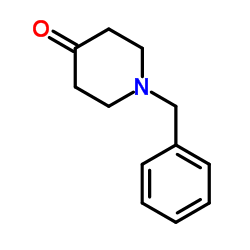 CAS#:3612-20-2
CAS#:3612-20-2 CAS#:50-00-0
CAS#:50-00-0 CAS#:17150-62-8
CAS#:17150-62-8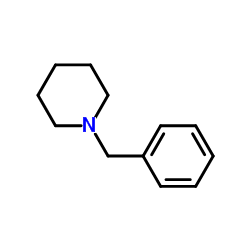 CAS#:2905-56-8
CAS#:2905-56-8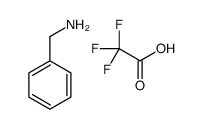 CAS#:90284-71-2
CAS#:90284-71-2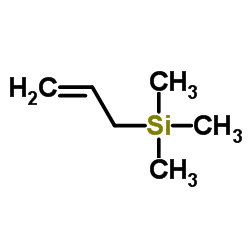 CAS#:762-72-1
CAS#:762-72-1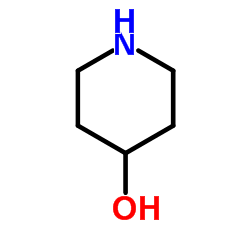 CAS#:5382-16-1
CAS#:5382-16-1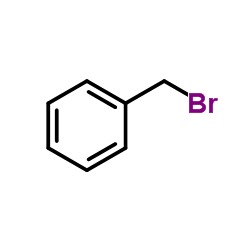 CAS#:100-39-0
CAS#:100-39-0 CAS#:100-46-9
CAS#:100-46-9 CAS#:20821-52-7
CAS#:20821-52-7 CAS#:50541-93-0
CAS#:50541-93-0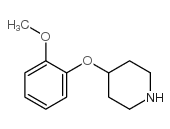 CAS#:28033-32-1
CAS#:28033-32-1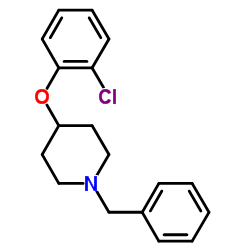 CAS#:900512-07-4
CAS#:900512-07-4 CAS#:67848-71-9
CAS#:67848-71-9 CAS#:127806-46-6
CAS#:127806-46-6![3-[(1-BENZYL-4-PIPERIDYL)OXY]PROPANENITRILE structure](https://image.chemsrc.com/caspic/250/175203-64-2.png) CAS#:175203-64-2
CAS#:175203-64-2![piperidin-4-yl [1,1'-biphenyl]-2-ylcarbamate structure](https://image.chemsrc.com/caspic/255/171722-92-2.png) CAS#:171722-92-2
CAS#:171722-92-2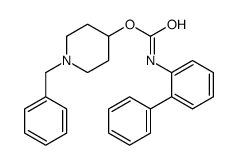 CAS#:171723-80-1
CAS#:171723-80-1 CAS#:19015-37-3
CAS#:19015-37-3
